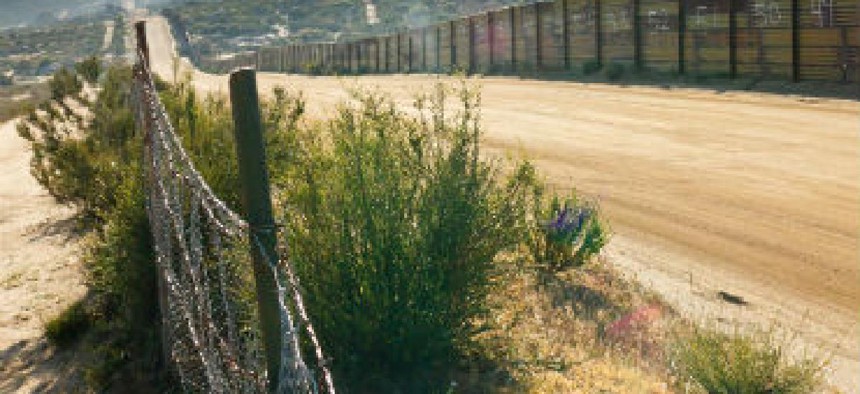Border wall not a high-rise, warns former CBP head

The president's proposed wall on the Mexican border will require close consultation with on-the-ground border agents to make sure what is put up doesn't go down like a previous effort did, former Customs and Border Protection Commissioner says.

The border wall President Donald Trump began laying the groundwork for in his Jan. 25 executive order must be built with input from the men and women that will work with it, or it could face failure like an earlier high-profile attempt to secure the border did, according to the former head of Customs and Border Protection.
Former CBP Commissioner Gil Kerlikowske called the wall a "simple answer to a complex problem," in an interview with FCW at the Biometrics for Government and Law Enforcement Summit. "Simple answers are almost always the wrong answers," he said.
Building a border wall "is not like building a high-rise in New York or New Jersey," Kerlikowske said.
The president's order included building the wall, the hiring of an additional 5,000 customs border security agents and a more aggressive policy for deporting undocumented immigrants, especially those accused of committing crimes.
There isn't a set timetable for the wall's construction in the order, but the president has said he wants to begin the project quickly. In announcing the order, he said construction would start "as soon as we can, as soon as we can physically do it," within "months."
The order also doesn't contain many specifics about what would roughly be a 2,000 mile continuous barrier running through Texas, New Mexico, Arizona and California. It does specify "immediate construction of a physical wall" that is "monitored and supported by adequate personnel so as to prevent illegal immigration, drug and human trafficking, and acts of terrorism." It defines the wall as "a contiguous, physical wall or other similarly secure, contiguous, and impassable physical barrier."
It's unclear exactly what the order is proposing, Kerlikowske said. The order could be talking about "additional fencing, raising fencing or temporary" barriers, he said.
The Bush and Obama administrations, he said, worked to build up complex, layered technical capabilities to augment existing fencing as well as observe remote, rugged sectors of border territory. The aerostats, unmanned aircraft, sensors, helicopters, tower-mounted long-range and infrared video cameras previous administrations put in place have helped CBP reduce the annual total of illegal entrants from 1.6 million 10 years ago to 415,000 in the last fiscal year, he said.
Gen. John Kelly, the new secretary of the Department of Homeland Security, told his Senate confirmation panel in mid-January that a wall by itself "won't do the job." He said it has to be backed by observation platforms, sensors, surveillance towers, unmanned airborne drones and simple human patrols.
The specter of CBP's failed attempt to stand up an ambitious integrated system of personnel, infrastructure and technology haunts the new effort, as a reference point for big, ambitious border security projects.
SBINet, which in 2006 looked to integrate towers, sensors, personnel and other assets, was cancelled in 2011 by then-secretary of DHS Janet Napolitano. The general consensus on the project was that it relied too heavily on contractors and that on-the-ground agents couldn't use the systems because their input wasn't sought in the project's development.
From SBINet, Kerlikowske said CBP learned the lesson that in developing on-the-ground assets, like surveillance and fencing, the actual operators have to be kept in the development loop or projects can be doomed.
The wall, he said, ultimately might not stop an increasing influx of immigrants from the strife-ridden countries south of Mexico -- El Salvador, Honduras and Guatemala. Illegal immigrants from Mexico, he said, are in the minority of those coming across the border. They are outnumbered by the numbers from the other three countries.
"More people aren't trying to elude us. They're turning themselves in" and claiming asylum or protection rights under U.S. laws at legal ports of entry along the border, he said. "A wall or barrier won't stop that."





